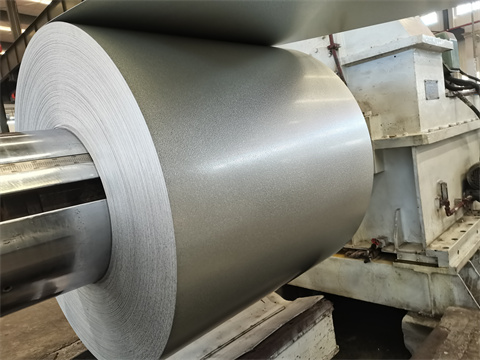Galvalume
Galvalume (GL) is a kind coating consisting of of 43.4% zinc, 1.6% silicon, and 55% aluminium that performs the role of protecting metals from oxidation.
Advantages:
- Excellent resistance to corrosion. The corrosion resistance of galvalume products is mainly associated with the protective functions of aluminium. When the zinc starts to degrade, the aluminium will form a thick alumina layer which prevents further corrosion of the materials inside. Its corrosion resistance is 3 times that of galvanized sheet.
- High heat reflectivity. The thermal reflectivity of GL sheet is very high, twice that of galvanized steel sheet, and it is often used as a thermal insulation material. roofing sheet is suitable for hot climates.
- Heat resistance. Galvalume steel has impressive heat resistance that will withstand temperatures that exceed 300 degrees , so it is often used in chimney pipes, ovens, luminaires, and fluorescent lampshades.
- Appearance: The surface of the GL steel sheet is smooth with beautiful and uniform spangles, and the base colour is silver white, so it can be used as cladding.
- GL coating has good adhesion to paint film so it can be the substrate for PPGL (pre-painted galvalume) steel.
- It has good processing performance and can be punched, sheared, welded, etc. for other uses.
Disadvantages:
- High cost: GL coil is more expensive than galvanized, HR and CR coils.
- Thickness: The option of coating thickness and coil thickness is limited. The sheet thickness ranges between 0.2-4mm generally.
- Not-suited for livestock facilities: GL coil is widely used in building materials, household appliances, automobiles, machinery, ships and so on. But it should not be used for animal confinement spaces. Galvalume coil will corrode faster than galvanized metal when exposed to animal urine.
Store GL steel coils and sheets indoors and keep the storage area dry and ventilated. Do not store it for a long time in an acidic environment. When storing outdoors, protect from rain and avoid condensation
To avoid external impact in transport use a skid to support steel coils to reduce stacking and protect from moisture.
[edit] Related articles on Designing Buildings
Featured articles and news
One of the most impressive Victorian architects. Book review.
RTPI leader to become new CIOB Chief Executive Officer
Dr Victoria Hills MRTPI, FICE to take over after Caroline Gumble’s departure.
Social and affordable housing, a long term plan for delivery
The “Delivering a Decade of Renewal for Social and Affordable Housing” strategy sets out future path.
A change to adoptive architecture
Effects of global weather warming on architectural detailing, material choice and human interaction.
The proposed publicly owned and backed subsidiary of Homes England, to facilitate new homes.
How big is the problem and what can we do to mitigate the effects?
Overheating guidance and tools for building designers
A number of cool guides to help with the heat.
The UK's Modern Industrial Strategy: A 10 year plan
Previous consultation criticism, current key elements and general support with some persisting reservations.
Building Safety Regulator reforms
New roles, new staff and a new fast track service pave the way for a single construction regulator.
Architectural Technologist CPDs and Communications
CIAT CPD… and how you can do it!
Cooling centres and cool spaces
Managing extreme heat in cities by directing the public to places for heat stress relief and water sources.
Winter gardens: A brief history and warm variations
Extending the season with glass in different forms and terms.
Restoring Great Yarmouth's Winter Gardens
Transforming one of the least sustainable constructions imaginable.
Construction Skills Mission Board launch sector drive
Newly formed government and industry collaboration set strategy for recruiting an additional 100,000 construction workers a year.
New Architects Code comes into effect in September 2025
ARB Architects Code of Conduct and Practice available with ongoing consultation regarding guidance.
Welsh Skills Body (Medr) launches ambitious plan
The new skills body brings together funding and regulation of tertiary education and research for the devolved nation.
Paul Gandy FCIOB announced as next CIOB President
Former Tilbury Douglas CEO takes helm.























